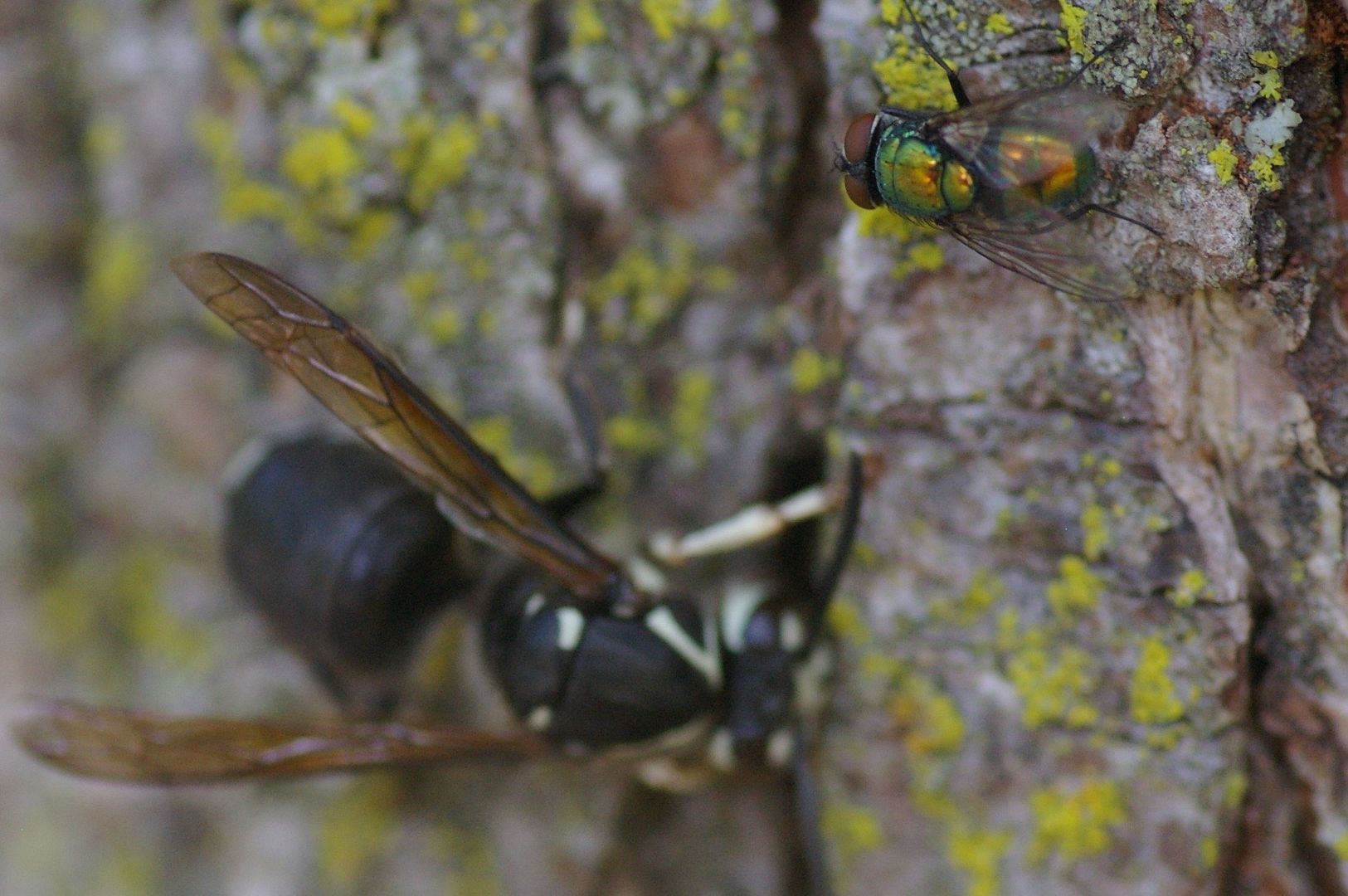Weird happenings on a elm tree in a behind the scenes part of the zoo

I was called up to see a tree up in a non-public part of the zoo, which (the thought was) might have a hornet's nest in it. A hornet's nest in a tree is pretty obvious--either it's a big gray paper football, or it's hidden in a big dead cavity in the tree. This was a pretty small elm, with no big holes, no big paper nests, but plenty of wasps and hornets on and around it. However, there were other insects involved as well, such as this Calliphorid carrion fly.

Calliphorid flies are refuse scavengers. You usually see them on dog poop, or dead animals, or on the trash.

Why were these ones on the trunk of a tree, next to the relatively huge and dangerous bald faced hornets? This is like a raven feeding alongside a polar bear--sure it happens, but there better be a great food source to account for it.

There were also some house flies, and up higher some cicada killer wasps (originally reported to me as queen hornets, understandable considering their size).

A few of the bald faced hornet's smaller relatives, the yellow jackets, were also on the tree. The heavily-mandibled wasps were chewing into the bark of the tree. When I knelt close to the tree for these photos I could smell a yeasty odor. This tree had been infected, through some injury, with a bacterium that causes the sap to sweeten and run; an environmental yeast was taking advantage of the sugary food supply and was leaving behind the characteristic odor. The combination of sugar and booze stink was irresistible to the suite of flies and wasps.

I told the keepers who worked in that area to be cautious around the tree, but that there wouldn't be any good in using insecticides. When I went back the next day, there were very few insects around; it seems the well had run dry.